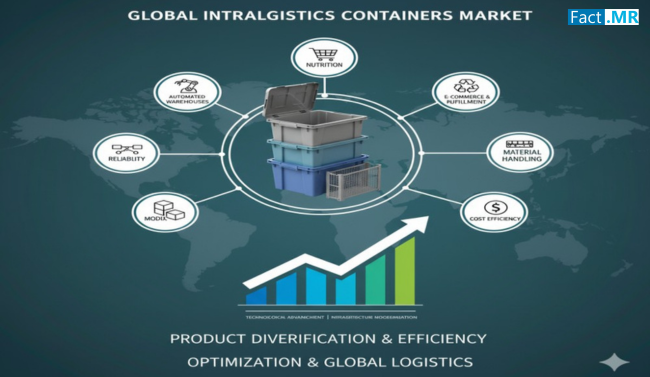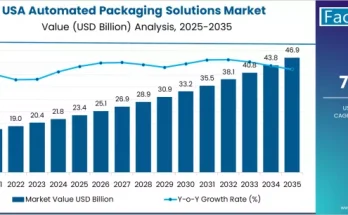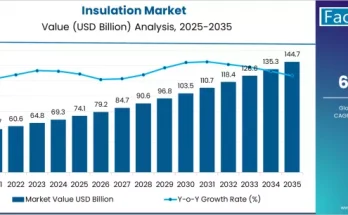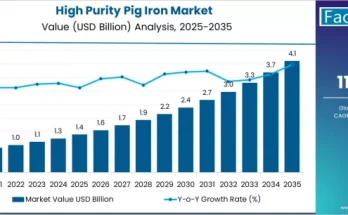In today’s fast-paced supply chains, the focus is not only on moving goods from factory to customer, but also on how those goods move within factories, warehouses, and distribution centers. This internal movement — often called intralogistics — depends heavily on efficient containers, handling systems, and smart workflows.
One of the foundational elements enabling smooth intralogistics is the intralogistics container. These are specialized storage and transport units designed for use inside facilities — for carrying items along conveyors, in automated systems, between workstations, stacking or nesting, and interfacing with robotics, automated guided vehicles (AGVs), and warehouse management systems.
The intralogistics containers market involves the production, innovation, and deployment of these internal-use containers. As warehouses and manufacturing centers embrace automation, smart handling, and just-in-time processes, the demand for optimized containers is growing. In this post, we’ll explore the market dynamics, drivers, segmentation, regional trends, challenges, competitive landscape, and future outlook for intralogistics containers.
What Are Intralogistics Containers & Why They Matter
Intralogistics containers differ from typical shipping or transport containers. Their design is tailored for internal movement, stacking, nesting, and compatibility with intralogistics hardware and software. Key traits include:
- Material: Plastic (e.g. polypropylene), metal/steel, or cardboard variants
- Shape & structure: Stackable, nestable, foldable, collapsible, grid design to reduce weight
- Load capacity & form factor: Designed for light, medium, or heavier loads depending on use case
- Interface capability: Compatible with conveyors, robots, picking arms, AGVs, sensors
- Durability, cleanliness & safety: Resistant to wear, suited for food, pharma, electronics contexts
- Standardization & modularity: For plug-and-play integration across systems
In warehouses or plants, intralogistics containers help in:
- Reducing handling time
- Improving space utilization via stacking/nesting
- Facilitating automation (robot picking, conveyors, shuttles)
- Enhancing visibility (containers may be RFID-tagged or sensor-enabled)
- Reducing misplacement, damage, and manual labor
Because they are core to the internal flow of goods, any gains in container design, material, or automation compatibility yield multiplicative gains in throughput and efficiency.
Market Drivers & Growth Catalysts
Several overlapping trends are fueling demand and innovation in the intralogistics containers market:
Automation and Robotics in Warehouses
As more warehouses adopt automation (AGVs, automated storage/retrieval systems, robotic sorters), the compatibility and performance demands on containers increase. Containers must be easily handled by robots, integrated with conveyors, and able to survive high usage cycles.
E-Commerce Growth & Speed Demands
E-commerce has dramatically raised expectations for speed, accuracy, and scale in order fulfillment. This pushes warehouse operators to upgrade internal logistics — faster sorting, denser layouts, smoother flow — which in turn drives demand for better containers.
Industry 4.0, IoT & Data Visibility
Modern intralogistics emphasizes real-time tracking, sensor data, and connected systems. Containers fitted with RFID, sensors, or compatible with tracking systems allow better inventory visibility, condition monitoring, and operational insights.
Space Optimization & Load Efficiency
Warehouse space is expensive. Nestable or collapsible container designs help maximize vertical and horizontal storage efficiency. Lighter-weight but durable materials reduce load and handling overheads.
Sustainability & Reusable Systems
There is growing pressure to reduce waste and use reusable, durable containers. Replacing disposable packaging, designing recyclable containers, and overall circularity contribute to demand in this segment.
Rising Industrialization & Supply Chain Investments in Emerging Markets
In regions expanding manufacturing, distribution infrastructure, or modern logistics, there is increased demand for modular warehouse systems and internal handling solutions — including containers.
Data from market intelligence studies shows that the global intralogistics containers market was valued around USD 7.9 billion in 2022, and is projected to grow at a compound annual growth rate (CAGR) of ~6.3% through 2032, reaching over USD 14.5 billion. (Based on market reports)
Regional Trends & Insights
North America
In North America, warehousing is already mature and highly automated. Operators are focused on efficiency, cost reduction, and retrofitting legacy systems. Demand is strong for smart containers compatible with robotics, IoT sensors, and flexible layout systems.
Europe
Europe emphasizes sustainability, standardization, and interoperability across systems. Regulations and corporate responsibility drive adoption of reusable, recyclable containers. Also, logistics hubs near urban centers require dense layout design, pushing container innovations.
Asia-Pacific
Asia-Pacific is one of the fastest-growing regions for intralogistics containers. Rapid expansion of e-commerce, manufacturing hubs, and infrastructure development in China, India, Southeast Asia are fueling new warehouses. In many countries, adopting automated systems is part of leapfrogging older systems.
Latin America & MEA
These regions see more selective adoption — often in higher-end logistics zones, special economic zones, or import/export hubs. Cost sensitivity is higher, so standard container solutions dominate initially, with gradual upgrade toward more advanced units.
Challenges & Restraints
While the outlook is positive, several challenges must be addressed:
Upfront Investment & Capital Justification
Upgrading containers (especially smart or modular ones) requires capital. For existing warehouses, retrofits may not yield immediate ROI unless workflow changes are optimized.
Compatibility & Integration with Legacy Systems
Many warehouses already use conveyors, lifts, or layouts designed around older containers. Introducing new container types may require retooling infrastructure, docking stations, or handling machinery.
Material Trade-offs & Durability
Lightweight materials may trade off durability. For heavy usage, containers must resist abrasion, UV, chemical exposure, and repeated handling — especially in automated environments.
Standardization & Interoperability
Lack of a universally accepted standard across container dimensions, interface mountings, RFID tagging, or sensor integration can hinder cross-vendor compatibility.
Maintenance, Cleaning & Sanitation
Especially in industries like pharmaceuticals, food & beverage, containers must permit easy cleaning, compliance with hygiene norms, and withstand repeated sanitization.
Supply Chain Disruptions & Raw Material Volatility
Price fluctuations in plastic resin, metals, or composite materials can affect margins and cost stability for container manufacturers.
Competitive Landscape & Key Players
The intralogistics containers market includes global, regional, and niche players. Many container manufacturers are also parts of larger industrial handling, automation, or materials companies. Key strategies in the competitive space include:
- Product innovation: Introducing modular, sensor-embedded, collapsible or “smart” container designs
- Vertical integration / partnerships: Tying container products with conveyor, robotics, WMS/automation system providers
- Regional manufacturing: Local factories to reduce shipping costs and import duties
- After-sales service & refurbishing: Maintaining containers, replacing parts, upgrading sensor modules
- Customization & variants: Tailored sizes, materials, locking mechanisms, or load-bearing options for special use cases
Some leading companies in the broader intralogistics / materials handling space also compete or supply container lines. As the container market is somewhat commoditized, differentiation by service, integration, and system compatibility is often critical.
Future Trends & Innovations
The intralogistics containers market is evolving. Some of the key trends likely to shape its future are:
Smart / Sensor-Enabled Containers
Embedding RFID, weight sensors, accelerometers, temperature sensors, or location detection to monitor container state, usage cycles, condition, or routing.
Modular & Foldable Designs
Containers that fold, collapse, or nest more efficiently when not in use to save space and reduce return logistics costs.
Interoperable Standards & Plug-and-Play Interfaces
Development of standard mechanical interfaces, docking points, sensor buses, or automated-lift interfaces to ease integration across vendors.
Materials Innovation & Composites
Use of new materials, composites, bio-plastics, or reinforced polymers that balance lightness, strength, and durability — while reducing environmental impact.
Predictive Maintenance & Lifecycle Management
Containers may report usage, stress, or wear data, triggering maintenance or replacement to avoid failures in high-throughput systems.
Integration with AGVs / AMRs / Autonomous Systems
Containers designed especially for robot handling — e.g. grip-friendly surfaces, alignment fiducials, compatible geometry for robotic arms or autonomous mobile robots.
Circular Economy Models & Leasing
Rather than buying containers outright, many operators may lease container fleets, with refurbishing or replacement built-in, supporting circular models.
AI & Analytics for Container Flow Optimization
Using data on container movement, bottlenecks, dwell times to optimize container allocation, routing, and reduce idle times inside the warehouse.
Use-Case Scenarios
- High-throughput e-commerce warehouses: Smart, nested containers help reduce travel time, ease robotic picking, and support fast order fulfillment.
- Cold chain or pharma operations: Containers with monitoring sensors, sealed design, and sanitation compatibility.
- Automotive parts assembly lines: Containers that flow seamlessly along conveyors and handoff points while protecting sensitive components.
- Shared 3PL facilities: Leasing container models, flexibility to suit multiple clients with varying needs.
- Micro-fulfillment centers in urban areas: Containers optimized for vertical stacking and compact storage to maximize urban warehouse real estate.
Outlook & Strategic Advice for Stakeholders
For Warehouse Operators & 3PLs
- Start with pilot implementation: test new container types in one zone before full rollout
- Look for modularity and upgrade paths: containers that can be retrofitted with sensors later
- Measure container performance metrics: dwell time, damage rates, handling errors
- Partner with system integrators to ensure container + automation compatibility
For Container Manufacturers
- Emphasize interoperability, retrofitting capability, and modular sensor add-ons
- Innovate in materials and durability to reduce lifecycle cost
- Offer leasing, refurbishment, or container-as-a-service models
- Collaborate with automation/robotics firms to co-develop container-robot interface standards
For Investors / Project Developers
- Focus on regions or sectors where warehouse automation is accelerating
- Support R&D in smart container systems, standardization efforts, sensor integration
- Explore financing models that lower entry barriers for clients
Conclusion
The intralogistics containers market may appear like a behind-the-scenes segment of supply chains, but it is foundational to the efficiency and intelligence of modern warehouses and factories. As automation, robotics, IoT, and demand for speed continue to reshape logistics, containers that adapt, communicate, and integrate seamlessly become strategic assets — not just passive boxes.
Strong growth is expected in the coming decade, particularly driven by expanding e-commerce infrastructure, warehouse modernization in emerging markets, and demand for intelligent container systems. Companies that innovate in design, connectivity, modularity, and service are likely to lead in this evolving space.



